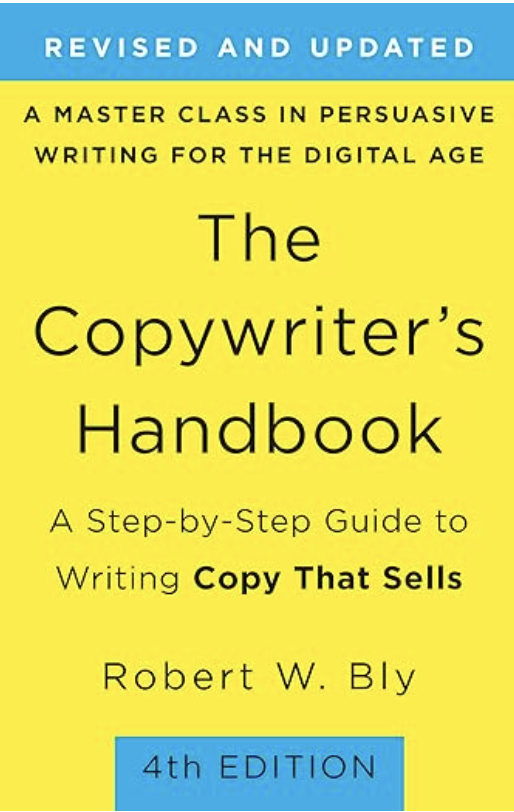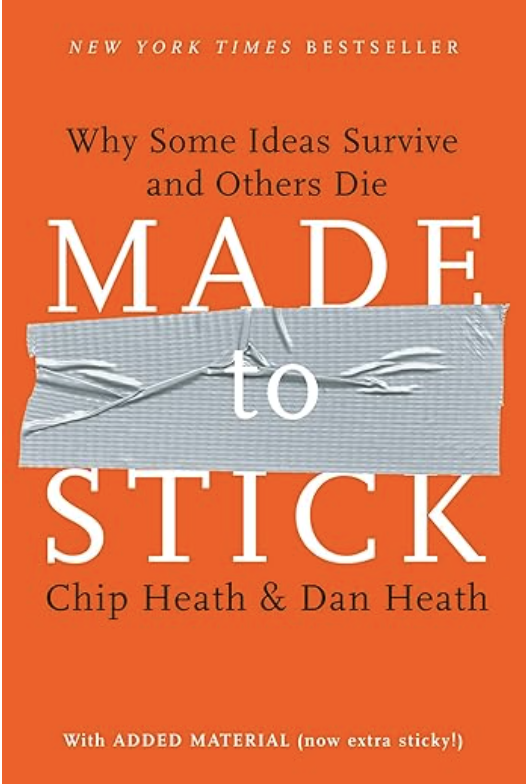The 10 best books for professional writers
For more than 15 years, I’ve made my living with words—writing for global brands, telling unforgettable stories, and mastering the craft one deadline at a time.
Along the way, I’ve found a handful of books that every serious writer needs on their shelf—because they don’t just teach you how to write, they teach you how to think like a writer.
These are the must-reads that have shaped my career into making pennies per word to a 6-figure writing business. And studying them can help you change yours too.
Best list of writing resources for professionals
FYI: I’m using my Amazon affiliate link in case you want to add any of these to your library.
1. Stephen King’s On Writing
Stephen King’s On Writing is part memoir, part masterclass—and it completely reshaped the way I approach my work.
From King’s raw, often funny personal stories, I learned that writing isn’t just about talent—it’s about showing up every day, treating it like a job, and finding the magic in the mundane.
His “toolbox” concept helped me sharpen my vocabulary, tighten my sentences, and cut anything that isn’t the story. His editing walk-through changed how I revise, and his insistence on reading widely and writing daily pushed me into a consistent, productive rhythm.
This book gave me a blueprint for sustaining a creative career for the long haul.
Get it here: Stephen King’s On Writing
2. Anne Lamott’s Bird by Bird
Anne Lamott’s Bird by Bird is equal parts writing guide, life manual, and pep talk for anyone who’s ever stared down a blank page. Drawing from her own messy, funny, and deeply human experiences, Lamott strips away the romantic myths of being a writer and replaces them with hard-won truths, practical strategies, and big-hearted encouragement.
This book taught me to stop waiting for the “perfect” time or idea, and to start writing in small, manageable pieces—bird by bird—until the work takes shape. It gave me tools to quiet perfectionism, mine my own life for authentic material, and embrace the emotional rollercoaster of the creative process. Just as importantly, it reminded me that writing is its own reward: a way of paying close attention to life, finding meaning in the chaos, and putting something true into the world.
Get it here: Anne Lamott’s Bird by Bird
3. Rainer Maria Rilke’s Letters to a Young Poet
Rainer Maria Rilke’s Letters to a Young Poet is a timeless collection of 10 letters written between 1903 and 1908 to Franz Xaver Kappus, a young officer cadet seeking guidance on whether to pursue a literary life. In them, Rilke offers deeply personal meditations on creativity, solitude, love, doubt, and the slow work of self-discovery.
This book taught me that the heart of any creative pursuit isn’t chasing praise or quick answers—it’s learning to “love the questions themselves” and live your way toward understanding. Rilke’s words reminded me to embrace solitude as fertile ground for art, to write from my inner necessity rather than external validation, and to view uncertainty not as an obstacle but as a companion on the creative path.
It’s a slim volume, but it’s one I return to whenever I need to remember why I create in the first place.
Get it here: Rainer Maria Rilke’s Letters to a Young Poet
4. William Zinsser’s On Writing Well
William Zinsser’s On Writing Well is the ultimate handbook for writing with clarity, simplicity, and humanity—whether you’re working on memoir, business writing, travel pieces, or essays. First published in 1976 and revised many times since, it’s packed with timeless advice on everything from word choice to structure to finding your voice.
Zinsser’s mantra—clear thinking leads to clear writing—changed how I approach every draft. His chapters on trimming clutter taught me to cut ruthlessly, his insights on tone helped me balance professionalism with personality, and his emphasis on rewriting showed me that great writing is often great rewriting. It’s the kind of book you can read in a weekend but return to for a lifetime.
Get it here: William Zinsser’s On Writing Well
5. Joe Sugarman’s The Adweek Copywriting Handbook
Joe Sugarman’s The Adweek Copywriting Handbook is as close as you’ll get to sitting in on a masterclass with one of America’s most legendary copywriters. Packed with real-world examples and step-by-step breakdowns, it reveals the psychology behind why people buy—and how to turn that knowledge into irresistible advertising and marketing copy.
Reading this book sharpened my ability to hook a reader from the very first line, guide them effortlessly through a piece, and lead them to take action without feeling “sold to.” Sugarman’s principles on storytelling, emotional triggers, and structuring offers are just as relevant today as they were when he first put pen to paper. If you want to write copy that not only gets attention but also drives sales, this one’s non-negotiable.
Get it here: Joe Sugarman’s The Adweek Copywriting Handbook
6. Robert W. Bly’s The Copywriter’s Handbook
Robert W. Bly’s The Copywriter’s Handbook is the classic, no-fluff manual every copywriter should own—updated for the digital age without losing the timeless principles that make great copy work. It’s loaded with practical techniques for crafting print ads, landing pages, emails, and web copy that not only grab attention but convert readers into buyers.
What I love about Bly’s approach is how actionable it is—you can read a chapter, apply the tactic that same day, and see results. From headline formulas that consistently pull, to the “Motivating Sequence” that keeps readers moving toward a sale, to modern strategies for boosting email and landing page performance, this book is a toolkit you’ll reach for again and again. Whether you’re new to copywriting or refining your skills, it’s like having a mentor on your desk.
Get it here: Robert W. Bly’s The Copywriter’s Handbook
7. Ogilvy on Advertising
Ogilvy on Advertising because duh.
Get it here: Ogilvy on Advertising
8. Ann Handley’s Everybody Writes
Ann Handley’s Everybody Writes is the modern marketer’s playbook for crafting content people actually want to read—and that drives real business results. In this fully updated second edition, Handley blends her signature wit with hands-on, step-by-step guidance for every stage of the content creation process, from idea to polished piece.
This book reminded me that good writing isn’t just about clean grammar—it’s about clarity, empathy, and a deep respect for the reader’s time. Handley’s updated frameworks, fresh examples, and expanded sections on today’s content formats make it indispensable for anyone creating blogs, emails, social posts, or landing pages. It’s a rare mix of inspiration and practicality that will make you a sharper, more confident communicator in a noisy digital world.
Get it here: Ann Handley’s Everybody Writes
9. Made to Stick: Why Some Ideas Survive and Others Die by Chip Heath & Dan Heath
Made to Stick: Why Some Ideas Survive and Others Die by Chip Heath & Dan Heath
completely changed how I think about communicating ideas. The Heath brothers break down the anatomy of a “sticky” message into six traits—Simple, Unexpected, Concrete, Credible, Emotional, Stories—and back it up with unforgettable examples, from urban legends to life-saving science experiments.
Reading Made to Stick taught me how to make ideas not just heard, but remembered and repeated. I started applying their principles to headlines, pitches, and client work, and instantly saw my writing become clearer, more compelling, and harder to forget. It’s a crash course in making your message travel farther and last longer.
Get it here: Made to Stick: Why Some Ideas Survive and Others Die
10. Influence, New and Expanded: The Psychology of Persuasion by Robert B. Cialdini, PhD
Influence, New and Expanded: The Psychology of Persuasion by Robert B. Cialdini, PhD is the persuasion bible—and the updated edition makes it even more powerful. Cialdini distills decades of research into seven universal principles of influence—Reciprocation, Commitment and Consistency, Social Proof, Liking, Authority, Scarcity, and the newest, Unity—and shows exactly how they play out in business, marketing, and everyday life.
Reading Influence gave me a sharper lens for spotting the psychology behind why people say yes—and how to ethically apply those same triggers in my own writing. It’s just as valuable for crafting high-converting copy as it is for recognizing when those same tactics are being used on you. This one stays within arm’s reach on my desk.
Get it here: Influence, New and Expanded: The Psychology of Persuasion by Robert B. Cialdini, PhD
If you enjoyed this post, you’ll love Content Connect. Subscribe to get weekly updates on content marketing and writing.



